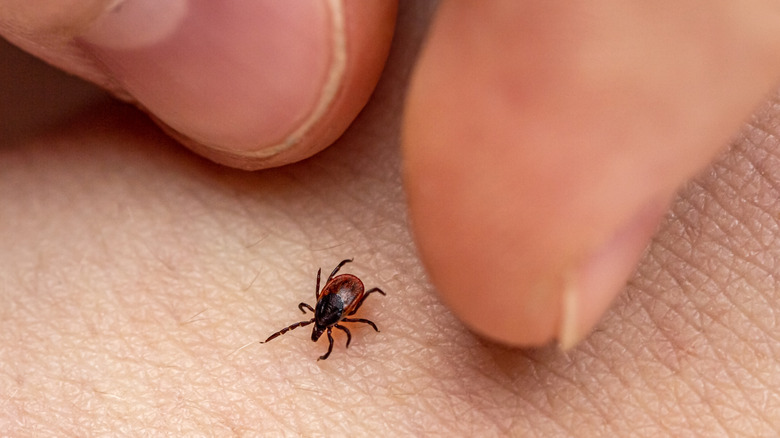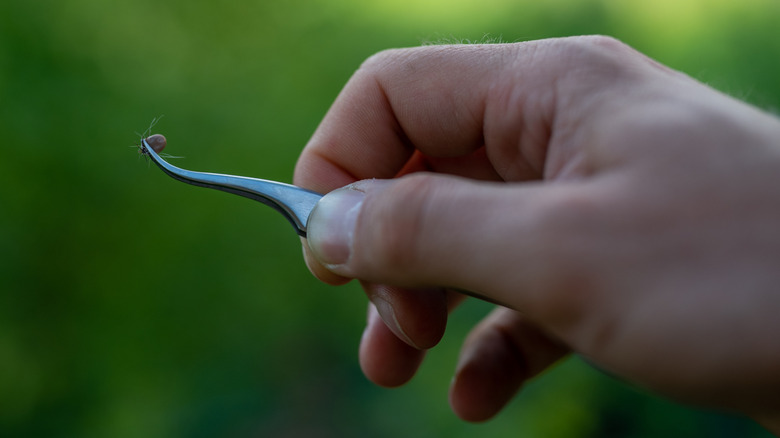The Common Tick Removal Technique That May Be Increasing Your Chance Of Infection
We may receive a commission on purchases made from links.
Many people love spending time outdoors engaging in hobbies like hiking, kayaking, hunting, and fishing. However, what most people don't like is getting bitten by a tick. This is because not only are these bloodsucking hitchhikers incredibly gross but they can also spread harmful diseases like Lyme. To prevent this, many people turn to different tips and tricks to avoid picking up a tick. But even if you employ all the anti-tick measures possible, if you go adventuring in the woods during tick season, you may still end up with one. Unfortunately, there is a lot of misinformation out there concerning the best ways to remove a tick, and some commonly touted removal techniques may actually increase your chance of getting an infection — like trying to get the tick back out using heat or chemicals.
The logic behind this tick removal idea is that by holding a heat source, like a lighter, up to a tick's butt or coating their back end in a chemical, like nail polish remover, the tick will feel uncomfortable enough to leave the bite on its own. However, this method is not recommended because, while it may sometimes work, it also causes the tick to sense the danger and regurgitate its stomach contents into your skin. This increases the chances that an infected tick will pass a disease onto you. Plus, if it doesn't work, you'll just end up with a slightly burnt dead tick stuck in your skin. So, how should you actually remove a tick?
How to remove a tick safely
As it turns out, to safely remove a tick, using the old fashioned method of simply pulling it out with tweezers works best. When doing this, it is important to try to grab the tick as close to your skin as you can and to pull it straight out slowly and without twisting. This is important because twisting the tweezers may cause the insect's head or mouth to detach from its body and stay stuck in your skin. After removing the tick, you should either flush it down the toilet or put it in a plastic Ziploc bag and throw it away — it is quite difficult to kill ticks by crushing them due to their hard exoskeletons. Then, once the tick is removed, wash the area of the bite with soap and water.
If you aren't a fan of having to concentrate to grab such a small insect with a pair of tweezers, you can always keep a tick key on you while camping or adventuring outdoors. This is a good idea because tick keys are inexpensive and are easier to use than tweezers. Plus, adding them to a keychain or hanging them on your hiking backpack makes them accessible and easy to find. However, if you spend a lot of time out in tick country and tend to find a lot of them on your body or clothing, you might want to consider using permethrin, which is a chemical tick repellent you can spray on your clothing and gear. While permethrin is a pesticide, it is the best way to keep ticks away and is considered safe as long as it is used in the way directed on the packaging.

